Shade gardening – how to choose perfect shady garden plants
Before you plant anything in a shady garden, you need to know what kind of shade you have.
Plant expert Stephen Ryan is one half of The Horti-Culturalists YouTube channel, with Matthew Lucas. He also has a nursery called Dicksonia Rare Plants. He says that people often come in asking for plants that will do well in shade.
‘And when you question them, you realise they have no idea what sort of shade they’re working with,’ he says.
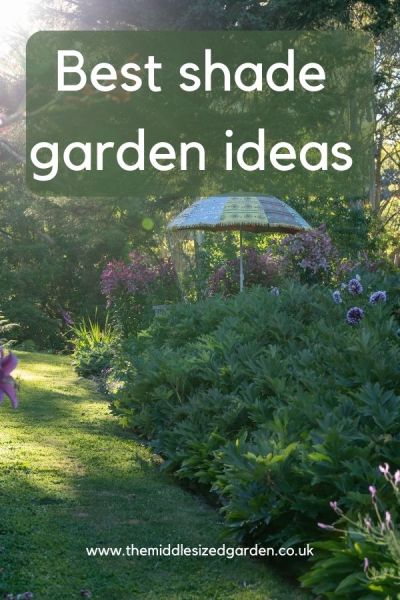
(The Horti-Culturalists produce weekly videos showcasing individual plants and gardens, and you can find their video 8 Plants That Flower In Shade here)
What kind of shade do you have?
Not all shade is the same. Indeed, sometimes shade isn’t even as shady as you think.
So it’s important to think about what kind of shade you want to plant up.
‘Look at where the light falls and when,’ advises Stephen. For example, don’t assume that planting under a tree will always be in shade because if the tree is in a sunny spot, then sunlight will often fall under the canopy of the tree.’
You can have dense shade – where there is hardly any sunlight or less than 3 hours of sun a day. That may be in the shadow of tall buildings or underneath evergreen trees.
Or you may have partial shade, which is 3-6 hours of direct sunlight a day. There’s also dappled shade, where a light tree canopy allows a certain amount of light through.
And finally, you have seasonal shade. This is when deciduous trees shade a border in summer, but in winter they lose their leaves. That’s why many spring bulbs do so well planted near deciduous trees – they get the sunlight they need while the leaves are off the trees ( See where to plant spring bulbs here.)
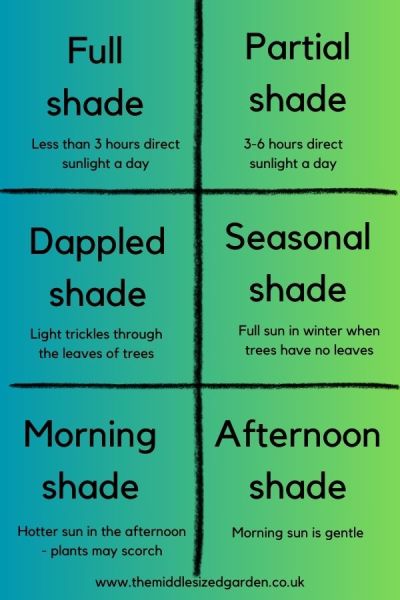
Do you have morning or afternoon shade?
What time of day is your shade? A border which has morning sun and afternoon shade will be happy with any plants that like partial shade. The morning sun is always relatively cool and gentle, and by the time the day heats up, your plants will be in shade. Hydrangeas would be a perfect choice.
But a border with morning shade and afternoon sun can be tricky, because the morning will be cool and shady. Then there’ll be a sudden transition to bright, hot sun in the afternoon, because the day will be hotter by then. You’ll need more resilient plants – there are some good suggestions for partial shade in 10 beautiful but tough perennials here.
‘If your border has morning shade and afternoon sun, look for sun-loving plants that don’t mind some shade,’ advises Stephen. That includes flowering shrubs, such as lilac, deutzia and spirea.
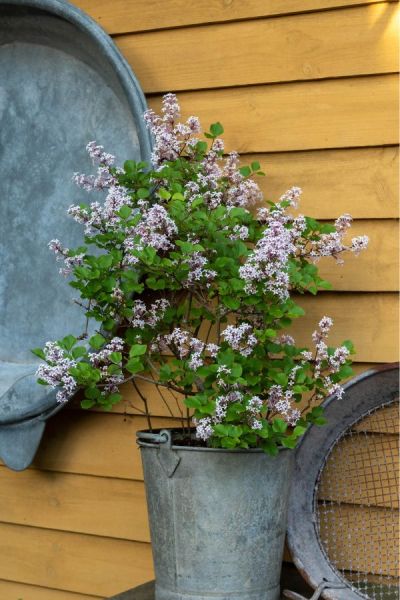
Flowering shrubs do well with afternoon sun.. Try lilac, deutzia or spirea.
And do you have dry or damp shade?
Dry shade is one of the most difficult areas to plant, but there are still options. Try bergenias, epidmediums, pulmonaria and some ferns.
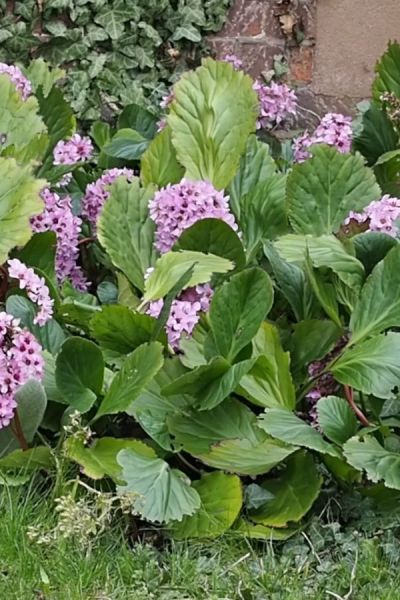
Bergenia is a good flowering plant for dry shade
And if you have damp shade, then astilbes, persicarias, lobelia cardinalis and some varieties of fern or iris can be good. In terms of shrubs, hydrangeas love shade and are often happiest in more damp conditions.
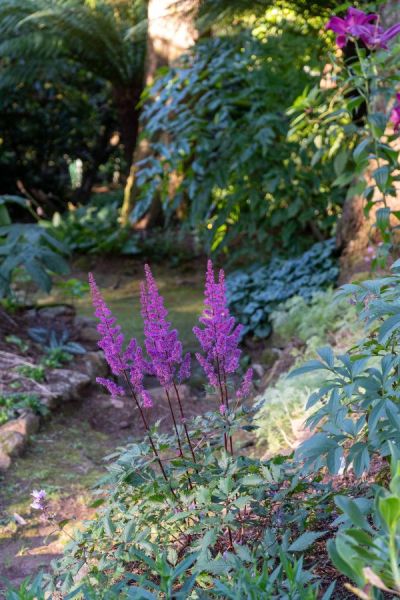
Astilbe – a good plant for damp shade
Planting and aftercare are important for dry shade
When you buy a plant from a nursery, it’s lived in a pot, explains Stephen. It will have been watered and fertilised. The plant won’t be accustomed to the relatively harsh conditions of dry shade, even if it is a dry shade plant.
So you’ll need to look after newly planted plants. Water them in the first summer, and if they’re planted around tree roots, Stephen would even suggest fertilising them.
Once their roots are well established, you should be able to leave them to grow without too much fuss.
Should you cut trees down to reduce the shade?
Trees have a value in any garden. They provide vertical interest, improve air quality, help prevent water run off and offer a habitat for wildlife.
And, as some summers get hotter, the shade of trees can be valuable in itself.
But if you’d like a little more light for your plants, then you can often create this by removing the lower branches and lifting the canopy. Or you can ‘thin’ the canopy out to create dappled light.
It is important to have this done by an expert. Just hacking back branches can spoil the tree’s shape and may even shock it into growing thicker and faster. See Top Tips for Trees – What You Need to Know Before Engaging a Tree Surgeon.
Obviously if the shade comes from buildings, then you won’t be able to make it lighter.

It’s worth consulting a tree surgeon rather than just hacking off the branches, but removing a few lower branches can let in more light. See this post for what you need to know before you contact a tree surgeon.
What can you plant under a dense evergreen tree?
‘The harder the conditions, the smaller the palette of plants you’ll have to work with,’ says Stephen.
Directly under a conifer tree is not only dark and dry, but the root system of the conifer will compete with anything you plant.
However, you can often plant on the edge of the canopy – just below where the branches end. Quite a lot of sun will reach this spot and it’s further away from the tree.
Try Bergenia cordifolia, epimediums and pulmonaria. Some varieties of fern are also good for dry shade,
Stephen says that in mild climates, Clivias (part of the Amaryllis family) are good, with brilliant orange flowers and strappy leaves. However, they won’t tolerate frost so won’t survive in many UK or US gardens.
What about raised beds under a big tree?
If the soil under and near a tree is full of tree roots, can you overcome this by building a raised bed?
Stephen says that you have to be careful. If you completely cover the area over the tree roots with big beds of soil, you could deprive the tree of essential air.
However, a raised bed slightly away from the tree, in front of it or to one side could give you extra planting options and an area of better soil to plant in.
What are the best foliage plants for a shady garden?
If you’re planting in the shade, then always think about how much a different shape, size or colour of leaf has to offer.
‘There are hundreds of good choices for foliage plants for shade,’ says Stephen. ‘Plants that evolved to thrive in shade often have large, interesting leaves in order to catch as much sun as possible.’
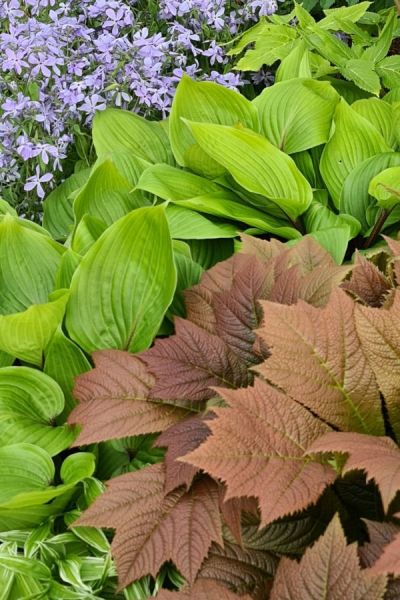
Rodgersia (right) and Hosta with dramatically contrasting leaves. They are both good shade foliage plants for fairly moist conditions – they won’t like really dry soil.
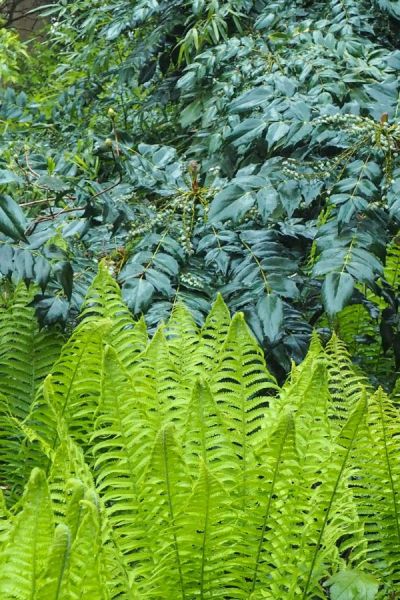
Mahonia and ‘polystichum’ or ‘dryopteris’ ferns do well in dry shade.
Can you experiment with plants for a shady garden?
So much about gardening is trial and error. And so often plants don’t do what you expect them to.
So can we take some risks and try planting a plant that’s labelled for ‘partial shade’ in ‘deep shade’ or vice versa? Or even try a sun-lover in a dingy spot?
Stephen says that you can, but you shouldn’t spend much money on it!
However, he does recommend planting self-seeders in a shady garden. ‘Often they will spread into quite difficult spots,’ he says. ‘And if the plant has chosen to grow there, as opposed to being planted there in a pot, then it can be very successful.
Good shade-loving self-seeders include honesty, forget-me-nots, foxgloves and Smyrnium. (See my top 25 self-seeded plants for more suggestions).
I have had success adding Smyrnium and foxgloves to a dry shady spot near a wall. However, Smyrnium can spread very quickly so be prepared to rip it out if it strays too far. It is one of my most commented-on plants, though.
Oddly enough, Angelica also self-seeded itself in this grouping, too, for many years, although it’s supposed to prefer moist conditions.
So little experimenting can be very satisfying.
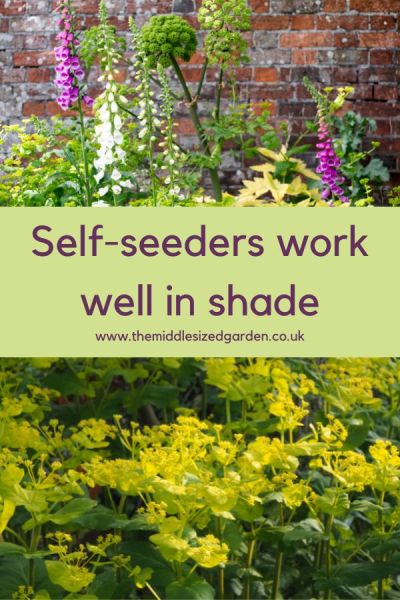
My self-seeded shade grouping – foxgloves and Smynium perfoliatum both self-seed well in this dry shady spot. Angelica, too, has self-seeded although I didn’t expect it to thrive here.
See the interview and more of the plants on video
The video on how to plant a shady garden is here.
Pin to remember what to plant in a shady garden
And do join us – see here for a free weekly email with more gardening tips, ideas and inspiration.
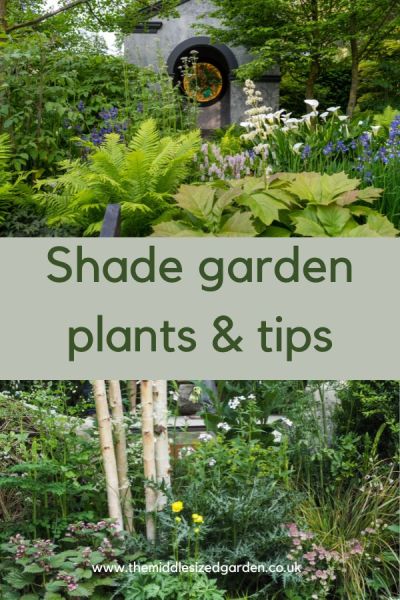

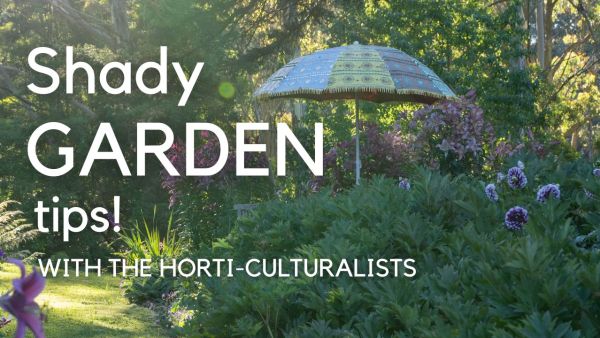























Really interesting and I’m bursting with ideas, thank you
Thank you!